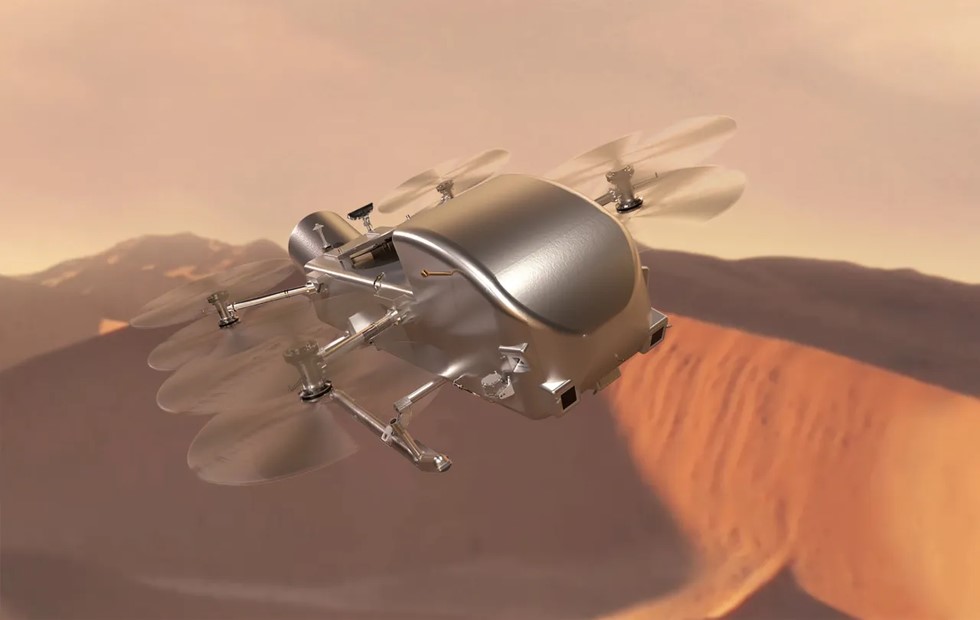
Dragonfly Mission

20.04.2024
Dragonfly Mission
|
For Prelims: About Dragonfly Mission, About Titan |
Why in the news?
Recently, NASA confirmed a Dragonfly rotorcraft mission to Saturn’s organic compound-rich moon Titan with a budget of $3.35 billion and a launch date set for July 2028.
About Dragonfly Mission:
- It is a "dual quadcopter" designed to fly across the surface of Titan, Saturn's largest moon. It will explore a variety of locations on Saturn's moon Titan.
- It will spend most of its time on the moon’s surface making science measurements. It will use a radioisotope power system like the Curiosity rover on Mars.
- Its flights, data transmission and most science operations will happen during the day, and it will have a lot of time to recharge during night on Titan.
- It is a rotorcraft, targeted to arrive at Titan in 2034, will fly to dozens of promising locations on the moon, looking for prebiotic chemical processes common on both Titan and the early Earth before life developed.
- It marks the first time NASA will fly a vehicle for science on another planetary body. The rotorcraft has eight rotors and flies like a large drone.
About Titan
- It is the largest moon of Saturn and the second-largest natural satellite in the Solar System.
- It is the only moon known to have a dense atmosphere, and is the only known object in space other than Earth on which clear evidence of stable bodies of surface liquid has been found.
- It is 50% larger (in diameter) than Earth's Moon and 80% more massive. It is the second-largest moon in the Solar System after Jupiter's moon Ganymede, and is larger than the planet Mercury, but only 40% as massive.
- It is 50% larger (in diameter) than Earth's Moon and 80% more massive. It is the second-largest moon in the Solar System after Jupiter's moon Ganymede, and is larger than the planet Mercury, but only 40% as massive.
- The atmosphere of Titan is largely nitrogen; minor components lead to the formation of methane and ethane clouds and heavy organonitrogen haze.
- The climate including wind and rain creates surface features similar to those of Earth, such as dunes, rivers, lakes, seas (of liquid methane and ethane).
Source: Indian Express